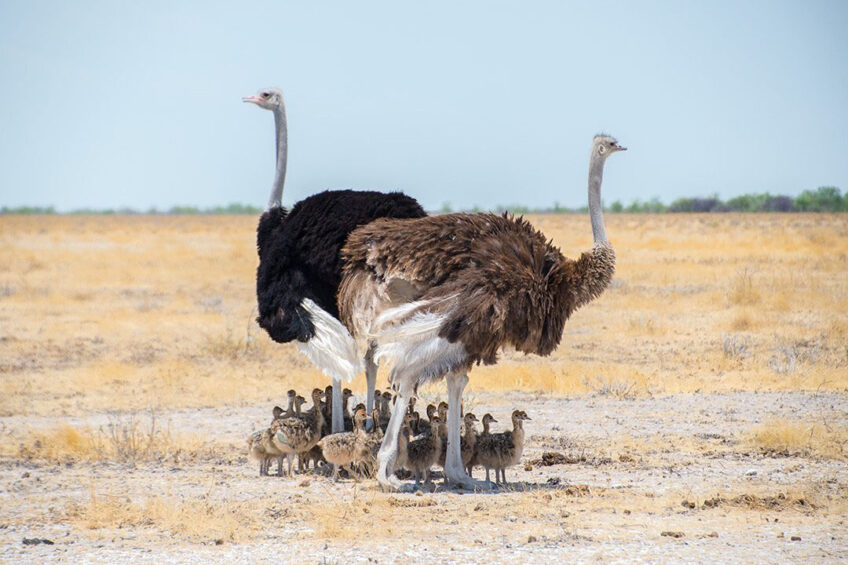The demise of Zimbabwe’s ostrich industry

Since the mid-1980s, the Zimbabwean blue neck ostrich and its associated agricultural production became one of the most productive in the world, only second to South Africa within the African continent. After 23 years of farm invasions (starting in 2000), a US$100 million-a-year industry is nearly extinct.
Commercial ostrich production began in the mid-1980s after farmers recognised the agricultural potential based upon success stories in South Africa (currently hosting about 65% of world production and about 90% of exports), albeit primarily as a source of feathers.
Producers were very keen to make the ratite industry a success. The Zimbabwean ostrich sector was a very good employer of school leavers and those with agricultural diplomas or degrees. Prior to 2000, (principally white) Zimbabwean commercial ostrich farmers produced about 30,000 birds, collectively earning US$100 million. It was reported that 25,000 ostrich chicks were exported into the European market.
Ideal species
Many of the larger farms were initially located in the arid southwest districts where the birds thrived alongside cattle and game. This was ideal as ostrich flocks avoided thick bushes and preferred to inhabit wooded grasslands and other open countryside. Hence, semi-arid, open, and short-grass plains were associated with the highest ostrich densities, both in terms of wild populations and under agricultural concerns.
Zimbabwe’s ostrich skin, meat and feathers exports generated US$9 million per month. Unlike in South Africa, ostrich meat became a regular refrigerated product in Zimbabwean supermarkets and cooked restaurant dishes. No commercially sold examples of ostrich biltong (similar to jerky) existed. Only a limited quantity of skin was processed into wallets, belts, shoes, and handbags.
The demise of the ostrich industry
There are barely any functional ostrich farms left, an enterprise requiring substantial land and long-term investment. Both the latter commodities have been withdrawn over the last 23 years, with farm invasions playing a significant role. The once flourishing European Union (EU)-approved slaughterhouses and tanneries are barely functional. Cumulatively, the lack of regular power, fresh water, transport, and feed supplies, has been detrimental.
Of the 200 farmers who reared ostriches commercially, the few remaining concerns are segregated into private wildlife parks. Most of the city abattoirs have become non-functioning in ostrich slaughtering, together with the trading company COPRO (Harare, Norton and Bulawayo), the trade association that once lobbied for producers.
Hope for a brighter future
One of the few remaining ostrich farmers, P. Cunningham, has hopes for a brighter future and says he is keeping only 150 pedigree breeding birds due to land restrictions. Former pleas by The Ostrich Producers Association of Zimbabwe (TOPAZ) to establish a niche market have been left asunder. Attempts to contact the Commercial Farmer’s Union (CFU) were fruitless. However, discussions with an MP of Harare North revealed that only 300 white commercial farmers (of all enterprises) were operating, and, of those, there were no ratite enterprises. In essence, there has been no viable recovery of this sector since the land invasions, and the situation of ostrich production, including that of eggs, chicks, growers and breeders, remains dire, if not extinct.
Dormant knowledge
If investor confidence is restored, former farmers are compensated for improvements, and open linkages with global agricultural initiatives are established again, there is a possibility that the Zimbabwean ostrich industry can rejuvenate. However, it would need a viable support network, including veterinary, agricultural, ratite, feed, construction, and advisory services.
Especially in the field of research at Zimbabwean universities, there is quite some knowledge, albeit dormant. Ostrich research could be kicked off again and should include initiatives that encompass veterinary/health issues (e.g., parasites, leg deformities, chick health, and hatching concerns/problems). University departments of animal/veterinary sciences and international/regional collaborations could engage in these research pursuits as long as funding is forthcoming.
On-farm research projects would be best channelled towards incubator improvements to attenuate dead-in-shell embryos and prevent leg deformities (which are noticeable on hatching). Additionally, local production of the most nutritious feed meals/pellets, for example, via National Foods Holdings Ltd., will assist in lowering import costs to farmers.
References are available upon request.
 Beheer
Beheer











 WP Admin
WP Admin  Bewerk bericht
Bewerk bericht